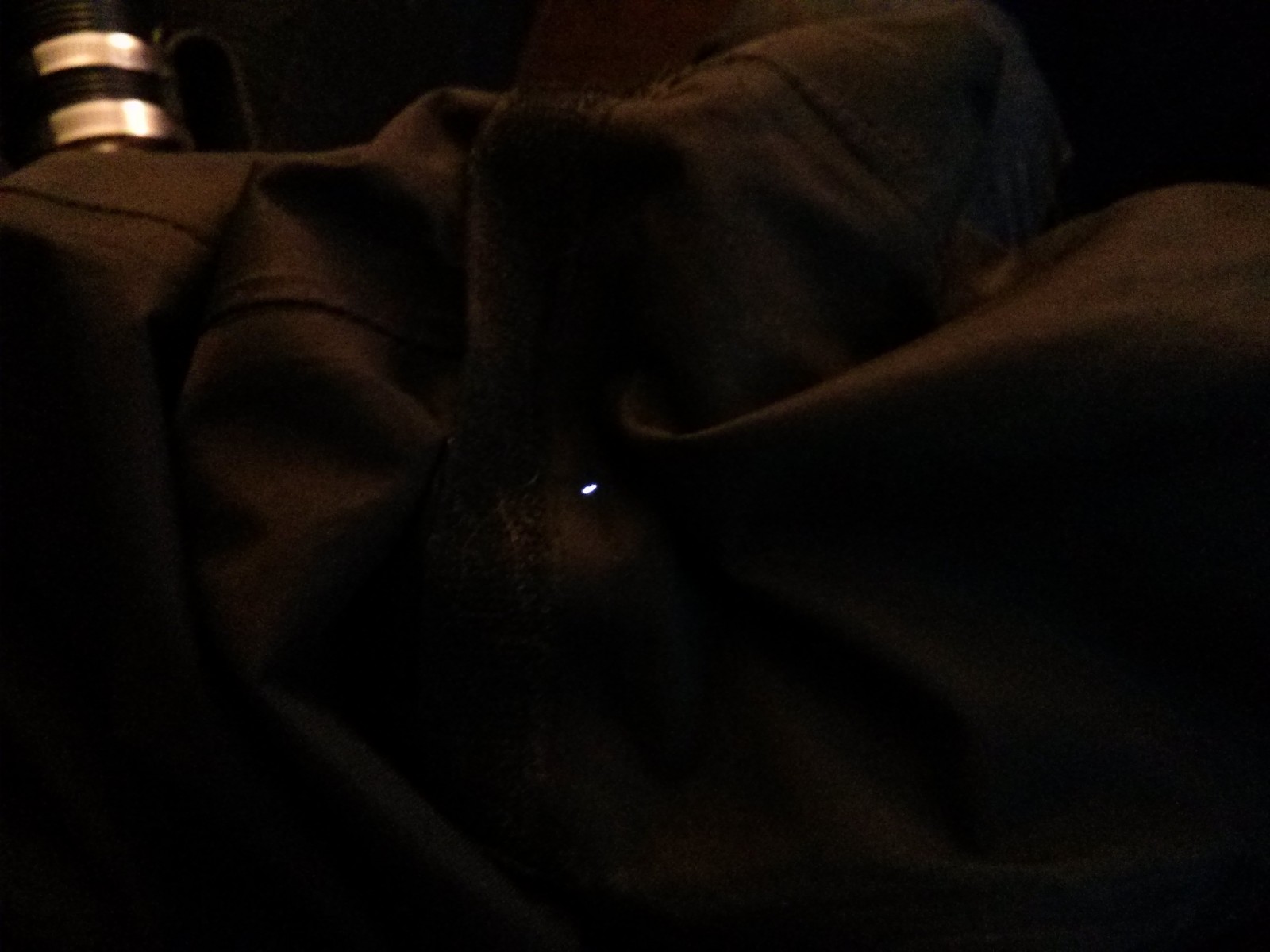I don’t think I mentioned this in my write-up about my last dive, but while getting out after my first dive my foot started getting wet. On the second dive, this translated into a fully-flooded leg, to the point where my undergarment was saturated. Luckily I’m having some minor trim issues, otherwise the water may have spread to my core, hah!
I suspect that I nicked my ankle on a barnacle on the exit, which caused the leak. I’m somewhat rough on my drysuit feet and have patched multiple leaks and dealt with other drysuit issues over the years. Here are some notes/tips/tricks/ideas on repairing drysuits, the easy way!
I’ll tweak and update this post as time goes on, perhaps to improve presentation, and to continue putting new tricks as I learn more. At this point, I wrote this late and night and haven’t proof-read it yet, so I apologize if anything doesn’t make sense. As I find time I’ll proof-read and add some photos. I just wanted to hammer a quick post out while I was thinking of it.
Do I Really Have a Leak?
Aaarrgghh!!! Wet again! First, you need to determine if you really have a leak, lots of things can make a drysuit wet. The really tough part is that water, once in your suit, can go to many places. I’ve had a leak in a neck-seal get my feet wet before, since upon standing up at the end of the dive previously un-noticed water in my chest flowed down to my foot.
Some things to consider first:
- Sweating on a hot day — Try to stay in the shade, keep cool, and on hot days go for a dip after putting your suit on before putting the rest of your gear
- Not doing up your zipper the entire way — Wax the zipper, especially the ends. Make sure to clean the zipper with a toothbrush if you get too much wax in it, as that’s a bad thing too. Remember, light application of wax, you don’t have to grind it in.
- Neck seal loose — Latex seals loosen up over time, and need to be replaced every now and again.
- Turning head too much — It’s best to limit head/neck movement, and twist your body around instead. If your seal becomes too loose, this will be even worse of a problem.
- Hair in the seal — self explanatory, too much hair in the seal can cause a leak.
If you ever have a drysuit dive where you actually stay dry and don’t get wet a little bit for one of the above reasons, you’re ahead of the curve! I usually take shots down the neck, and have learned to just accept it.
I Have a Leak, But Where?
You suspect, or just downright know you have a leak. How do you find it? First, look for the obvious tears in the suit or seals. If you’ve had work done on your suit before, check that too. I had a shop improperly install a replacement neck seal, with a ripple in it that quickly began leaking somewhat catastrophically. I assumed that the work wouldn’t be faulty from the shop, but you can guarantee it was! I ended up fixing it with aqua-seal, and a clamp to hold the ripple flat while it dried — Hasn’t leaked since.
Some generic advice for the following methods, remember that if you’re wet, the water is going from the outside in. Sometimes it may help to turn your suit inside out to do these tests, and sometimes you need to move the shell around to find the leak as small leaks can disappear and reappear as the material moves.
Bright Light Method
Putting a bright light inside the drysuit in a dark room is an easy way to find leaks, especially ones that cause serious floods. Note that it may not help find tiny leaks (See the below methods), and I’ve never tried to find zipper leaks and suspect that it probably won’t help.
Also to beware of, sometimes the seams of certain bags may show light through without being leaks, if a clear glue was used on the tape. (My Whites Fusion has this effect)
Inflation Method
If you have dryglove rings, you can put the drygloves on the suit, and a 2 litre pop bottle in the neck seal (if you have a small neck like me) to seal it up for an inflation test, and using soapy water to look for bubbles. Best for diagnosing ziper leaks. It’s best that the 2 litre bottle have water (or pop?) in it, because if it’s too light, it will go shooting across the room. Of course, that can be fun if it’s the effect you’re after.
If you don’t have drygloves, smaller bottles may work in the wrist seals as well — I haven’t tried it. I used to use fancy seal clamps I’d made, but ultimately found that it’s a pain and rarely, if ever, pull them out anymore.
The Flood Method
Some tiny leaks in my socks have been tough to find with the above methods. What ended up bringing them out was filling the leg with water, holding the top part of the leg closed tight, and applying pressure. This causes a stream of water to shoot out from any leaks, including tiny ones.
Fixing Bag/Material Leak
I’ll confess, I have a drysuit patch kit, but have never used it. I tried once on a seam leak, ignoring the instructions that said the kit wasn’t for seam leaks. It didn’t work. I haven’t tried using it properly. I suspect using a proper patch kit is the most reliable, long-term method to fix leaks, but I’ve found other ways..
I use Gorilla Tape for small leaks. Initially, I used it to fix a cracked fender flare on my Jeep, and it has survived the rain for years without degradation like cheaper brands of duct-tape.
It’s simple too. I just apply a small (say 1″ square) patch of gorilla tape over small leaks, and that’s it. I’ve had small leak repairs last for over a year. I now consider Gorilla Tape to be an essential part to a save-a-dive kit.
I’ve heard of it being used on larger leaks and tears in a pinch, but if the hole is excessively large, it might not be the best long-term repair.
Leaky Valves
Sometimes a valve will leak, especially a dump valve. One of the best ways to prevent this is maintenance, make sure you rinse the valves with fresh water after a dive to avoid build-up of sediment, grime and salt crystals. Every once and a while, or as the first action to take if you observe a dump-valve leak, it’s a good idea to run water through a dump valve, from the inside of the suit out. This has fixed seemingly heavy leaks for me before.
I haven’t rebuilt a valve yet, so I can’t comment. In a worst case scenario, they are typically easy to replace unless they’re glued on
Conclusion
Hopefully the above tips are useful. Finding and fixing minor leaks in drysuits is very simple, and worth trying to do yourself. Using the dive-light method and Gorilla Tape, you can even fix small leaks on a surface interval with ease!
« Return to Furry Creek A Furry Creek Dive to Kick Off December »



